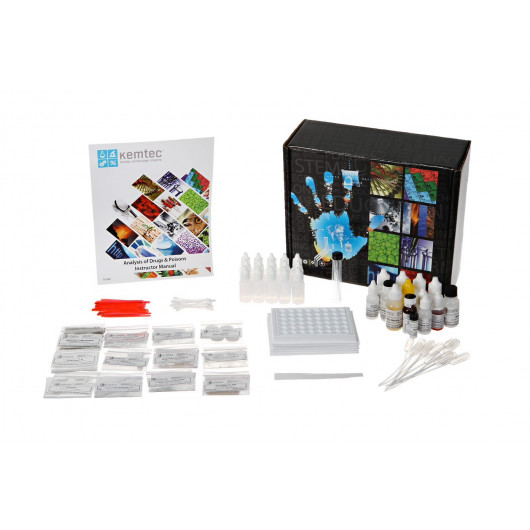Chromatography of Amino Acids SKU: ALD2522
Kit contains enough materials for 15 groups. In this activity, students will perform a paper chromatography experiment on three known amino acids, and then use their results to identify the...


Introduce students to qualitative analysis in the intriguing context of criminal investigation in a Toxicology Laboratory.
National Standards for Grade Levels 9-14
Analysis of Drugs & Poisons includes five experiments: Identifying Over-The-Counter Drugs, Identification of Simulated Controlled Substances, Presumptive Testing for Cocaine, Determination of Poisoning through Amino Acids in Simulated Urine, and Analysis of Unknowns from a Crime Scene. Ideal for teaching chain of custody and techniques for isolating drug sample evidence. Includes instructor’s manual with reproducible student instructions, data sheets, and complete answer keys. Allow one hour lab time for experimentation. Required but not included: UV light, microscope, oven, lamp, or hot plate, scale, glassware and lab supplies. Designed for 24 students working in groups of four.
Kit Contents
Shipping Weights and Dimensions: Sh. wt. 4lbs, DIM 13” x 12” x 5”
Refill Kit 10-502R
Sh. wt. 3lbs, DIM 13” x 12” x 5”
You are sent a comment success. The administrator will review and approve your comment. Thank you!
Kit contains enough materials for 15 groups. In this activity, students will perform a paper chromatography experiment on three known amino acids, and then use their results to identify the...

Introduce students to qualitative analysis in the intriguing context of criminal investigation in a Toxicology Laboratory.